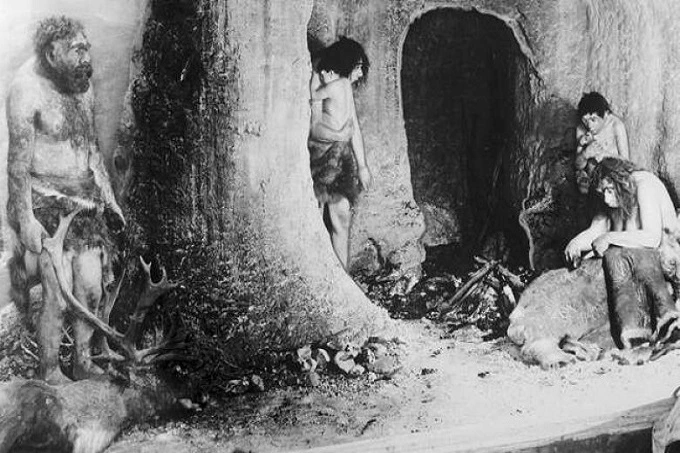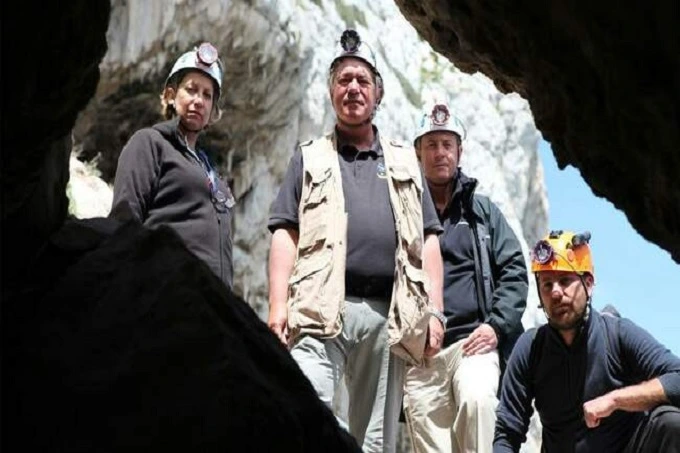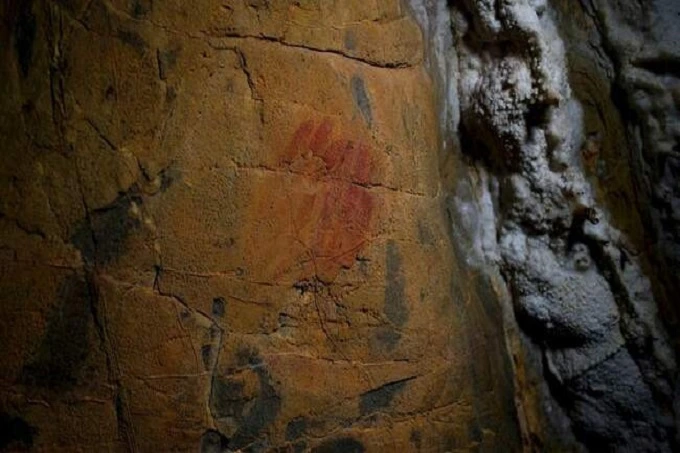Gibraltar: the last refuge of the Neanderthals

Many different sorts of humans lived in Europe forty thousand years ago. Many are familiar with Neanderthals, stocky, thick-set, and prominent forehead ridges. They had remarkable similarities with us and had been residents in Europe for about 300 thousand years.
Neanderthals lived in Europe around 40,000 years ago, and to this day, experts do not fully understand many aspects of their culture. On the other hand, four caverns in Gibraltar provide an unrivalled look at what their lives may have been like at the time.
The Neanderthals were, for the most part, a consistent social group. They existed for an additional 200,000 years after modern humans (Homo sapiens). Nevertheless, all traces of their existence were destroyed approximately 28,000 years ago. During this period, the Neanderthals probably became extinct as a distinct people.
According to the fossil evidence, most of the discoveries related to this species have been made in the area close to Gibraltar recently. We have a better understanding of what the Neanderthals were like thanks to drawings and remains found in the southern part of the Iberian Peninsula. The most recent discoveries indicate that they were more similar to us than we had previously thought.

The UNESCO World Heritage Site designation was bestowed upon Gibraltar that same year (2016). Four significant caves are of great interest to the scientific community. Three of them have seen relatively little exploration up until this point. But Gorham’s Cave, one of those caves, is the location of annual excavations. Clive Finlayson, director of the Gibraltar Archaeological Museum, asserts that the ancient people of Gibraltar “didn’t merely dwell here.” – It was a Neanderthal city or settlement of some kind. Many ancient people used to call this place home. It is not yet entirely obvious if we are speaking about a few dozen individuals or families. On the other hand, Excavations have shown that Neanderthals frequently lived in small groups.
New information

In the year 1848, a Neanderthal skull was discovered for the very first time in Gibraltar. Since then, the skeletal remains of seven additional persons and various items that these people utilized in their day-to-day life, such as tools, animal remains, and shells, have been discovered.
It is feasible to determine an accurate date for the cave discovery thanks to the cave’s internal sedimentary layers that have been preserved. Evidence from fossils suggests that Neanderthals inhabited Gorham’s Cave on and off for at least 100,000 years. One of the discoveries suggests that the very last Neanderthals may have inhabited this area between 24 and 33 thousand years ago. Because of this, Gibraltar became an important destination for exploration.
It’s possible that Neanderthals inhabited other coastal regions as well. However, in the past 30,000 years, there has been a massive rise in water levels, which indicates that any additional fossil evidence has been submerged for a very long time. Clive says, “We are extremely fortunate to have proof in these caves.”
Why caves?

Clive, along with his wife Geraldine and son Stewart, has spent a significant amount of time exploring the caves in this area over the past several years. The three of them are all scientists. The back of the cave is dark and has multiple smaller chambers, in contrast to the bright and open front of the cavern, where most of the natural light comes from. The caves are a perfect place to sleep, rest, and shelter oneself from potential dangers such as predators because they are cool in the summer and warm in the winter. It’s easy to see why Neanderthals stayed in this area for so long.
How different are they from us?
The Neanderthals that lived in this area were short, stocky people who could not communicate verbally, just like the rest of their kind. They did most of their talking to one another through grunts and jerky movements of their bodies. Nevertheless, Paola Villa of the University of Colorado asserts that they were quite similar to us in many ways. She laughed as she said, “That’s what it takes to debunk the contemporary human complex.” We have the same DNA (in the sense that we share 99.5 percent of it), but we also have similar qualities.
Scientists believe that the interbreeding of several species caused this. There has been very little genetic divergence among humans living outside of Africa. For instance, through genetic testing, Paola herself discovered that she had 2.5% of her DNA, which points to the fact that she is a descendant of a Neanderthal. The overall percentage of modern people who exhibit this trait can approach twenty percent. The finding made at Gorham’s Cave is assisting us in gaining a deeper understanding of a species that is so closely related to our own.
Lifestyle and diet

There is evidence from cave remnants that Neanderthals consumed marine creatures and shellfish. This should not come as a surprise in light of the new information that was published in January 2020, which suggests that Neanderthals were capable of swimming. Even evidence indicates that they targeted dolphins for their hunting. It is still unknown how they were able to accomplish this. However, scientists also know that these people hunted large game such as woolly mammoths, rhinos, deer, and goats.
In addition, the remains of over 150 different species of birds were discovered in Gorham’s cave. It appears that these ancient birds also fed on the ancient people who lived there. In addition, there is evidence that they successfully captured golden eagles and vultures. In addition, capturing them is a very difficult job. According to Clive, most of the bones came from birds with large plumage. It would appear that Neanderthals hunted them to produce feather jewelry out of the feathers they captured. This individual thinks it is quite possible that they fashioned some form of capes worn and wrapped around the shoulders.
Culture
All of this points to the fact that Neanderthals possessed a profound comprehension of cultural symbols. The fact that they were able to think of such things as decorations speak to their ingenuity and their ability to reason abstractly. This, in turn, provides further evidence that their cognitive abilities were comparable to those of us. No matter how intelligent they were, the development of cultural values is one of the characteristics that distinguish humans from other animals.
Perhaps Neanderthals even made art. The “Neanderthal hashtag” was a marking that researchers uncovered on the wall of Gorham’s cave in 2014. This was a startling find that occurred in the year 2014. Geraldine said this was the first piece of Neanderthal art ever discovered. She believes that much effort was put into drawing the picture, even though it is so rough. She claims that it was neither a mistake nor a coincidence. “This inscription is the outcome of a thought process.”
When archaeologists attempted to duplicate the design of the image, they discovered that to create the deepest groove, it took sixty strokes with a very sharp stone tool. “It’s obvious that this was a deliberate act, not an accident,” Geraldine says.
Neanderthal art

Additionally, ornamental shells and indications of red ocher pigment use were discovered on the cave walls during Gorham’s cave exploration. Additionally, it provides evidence that Neanderthals were capable of original thought. This is demonstrated by the presence of rock sculptures throughout Italy that depict animals and geometric shapes. The great majority of them were Neanderthal in origin. However, the paintings found in Gorham’s Cave date much further back in time; it is estimated that they were created some 64,000 years ago.
Language
If Neanderthals were capable of making simple jewelry and paintings, then it is reasonable to believe that they were also capable of more complicated forms of communication. In a study conducted in 2013, researchers looking at the structure of the hyoid bone found that it was comparable to our own.
A computer model created by a group at the University of New England led by Stephen Wroe showed that Neanderthals were capable of talking in a manner comparable to our own. “Many people believe that one of the key qualities distinguishing humans from other animals is the capacity to speak their language. “If Neanderthals were capable of communication, then there is no question that they were human,” he argues. It is hard to know for certain whether or not they utilized the language, but there is no question that they had the potential to do so.
Even though the Neanderthals became extinct, a portion of their gene pool is still present in our species. This mark will remain on people’s bodies for many millennia to come.




